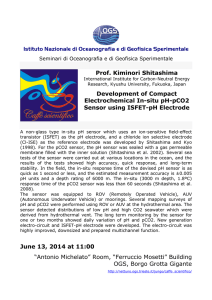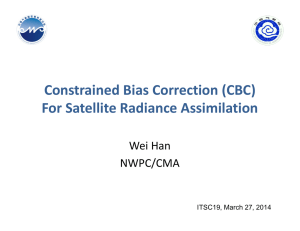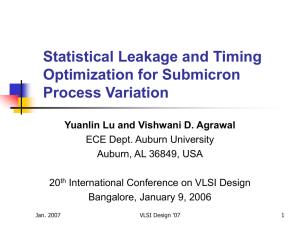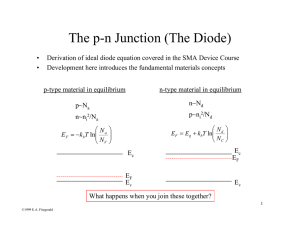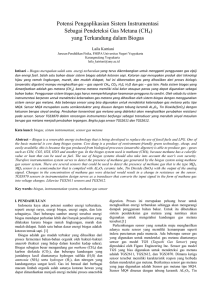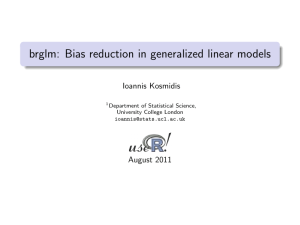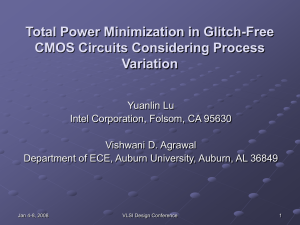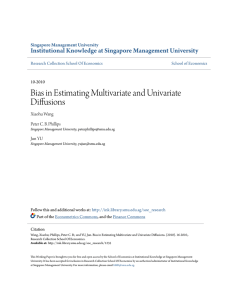Test of mini-pad silicon sensor for PHENIX MPC-EX
advertisement
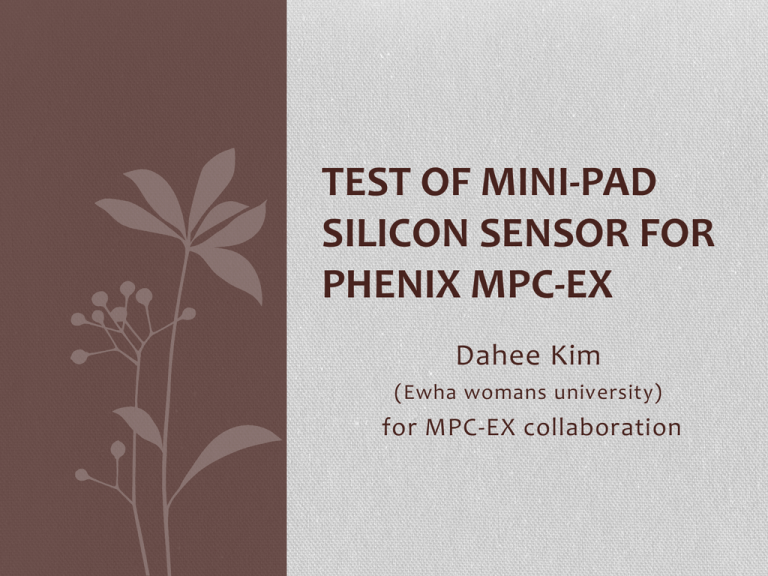
TEST OF MINI-PAD SILICON SENSOR FOR PHENIX MPC-EX Dahee Kim (Ewha womans university) for MPC-EX collaboration Contents • We report test results of prototype silicon sensors for PHENIX MPC-EX. We describe basic theory and suggest key tests for silicon sensor. Suggested and reported key tests are • CV characteristics • IV characteristics • & Electric circuitry test Basic theory • Operation of PIN sensor. • Electron-hole generation & depletion region. d = 2 rme (V +Vbi ) Capacitance • Relation to depletion thickness. d = 2 rme (V +Vbi ) A C =e d Full depletion region is about 23.5pF 17.0pF Simulation about CV characteristic Capacitance 1/C2 (F-2) 10000 ´ 1018 2rm 19 -1 -2 = 5.09 x 10 V F 2 A 8000 6000 Full depletion voltage 4000 2000 0 0 20 40 60 80 100 120 140 160 180 Vbias (V) • Scaling with area on test pattern. C(F) Scaling with area on YS02 test pattern. 10-9 A C =e d 10-10 10-11 102 3 10 104 2 Area(mm ) Current • Shockley diode equation(Ideal case) • V VT I = I 0 (e -1) at 300K V > 4VT = 0.1(V ) ® I » I 0e V VT • Simplifying idealization (drift, diffusion, thermal recombinationgeneration). • Not considered : Surface leakage current, high injection, defect etc. • With high injection(large I ), V VT I = I0e ® I0e V 2VT Forward bias current 10-2 Series resistance dominated I (A) YS11 test pattern, Forward-bias characteristics 10-3 10-4 -5 10 Ideal region I=I 0e I=I 0e V VT V 2V T High injection region 10-6 10-7 0.2 0.4 0.6 Vbias (V) YS11 test pattern, Forward-bias characteristics I (A) 0.008 Reff < 18 W @ V bias 0.6 (V) 0.006 0.004 0.002 0 0.2 0.4 0.6 V bias (V) dV 2VT = R = Rdiode + Rext = + Rext ® Rext (V ® ¥) dI I Reverse bias current(Leakage current) • Source of leakage current • Volume term • Thermal recombination-generation leakage current • Defect • Surface leakage current • Radiation(include light and cosmic ray etc..) Guard ring structure Edge Rounding Bias Guardring Floating Guardring (3 layer structure) PADs of Sensor Bonding PADs Effect of Bias Guard Ring YS04_L real sensor Effect of Dicing YS09_L real sensor Before dicing Floating Guard Ring After dicing Electric circuit test • We measured resistance between neighboring channels. Small fraction of them had short. Current yield ~ 30%. Statistics suggest the short is between metal traces. Stringent metal etching process is expected to cure the problem. 6 cm 30 m Electric short happens between neighboring channels. 30 m 3 4 1.5 cm 1.5 cm 3 cm Cut line 2 1 The short frequency is proportional to trace overlap. Summary • We measured full depletion voltage for 425μm wafer to be 35V which corresponds to resistivity ~15,000 Ωcm. • No breakdown is observed until the reverse bias voltage of 250V. • We observed low leakage current less than 1μA for the whole sensor of 6 x 6 cm. • We identified a small number of shorts between neighboring channels and attribute the problem to close metal traces. We propose further etching process for metal layer and/or increased space between metal traces.
